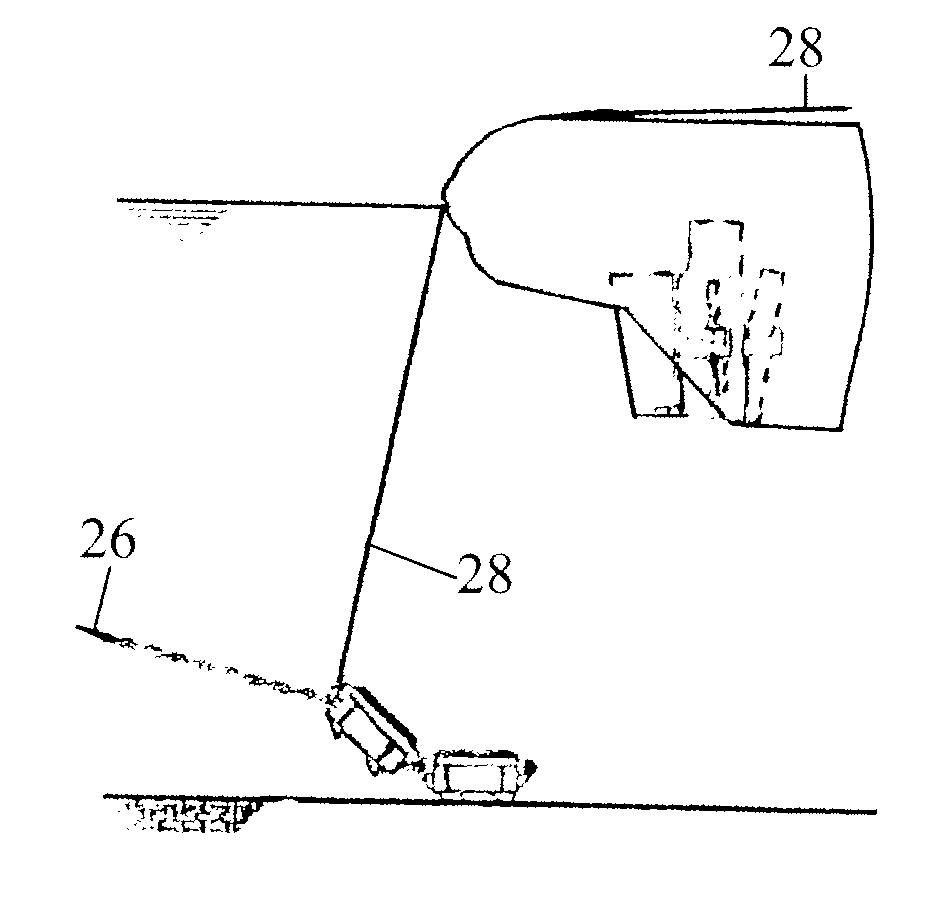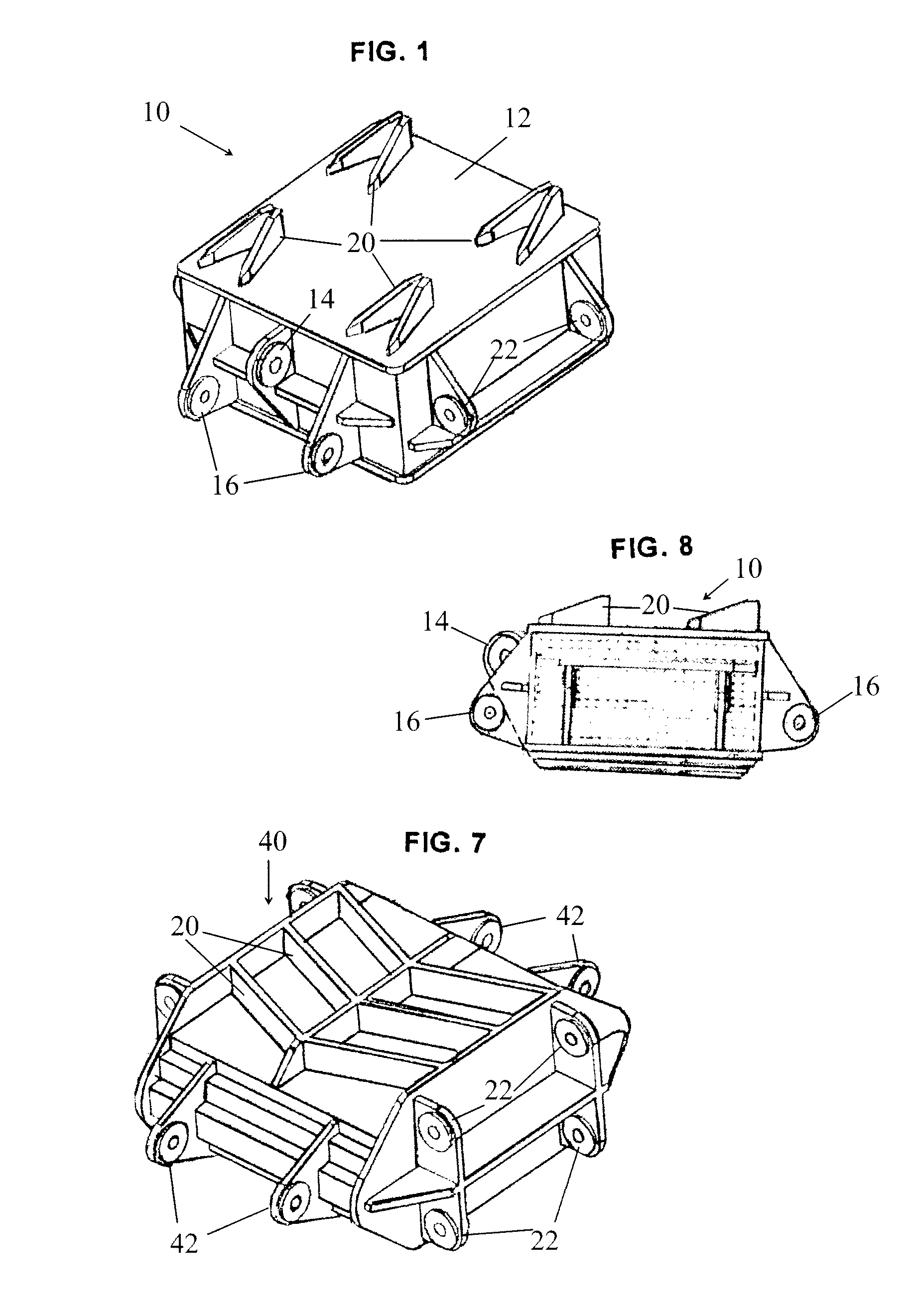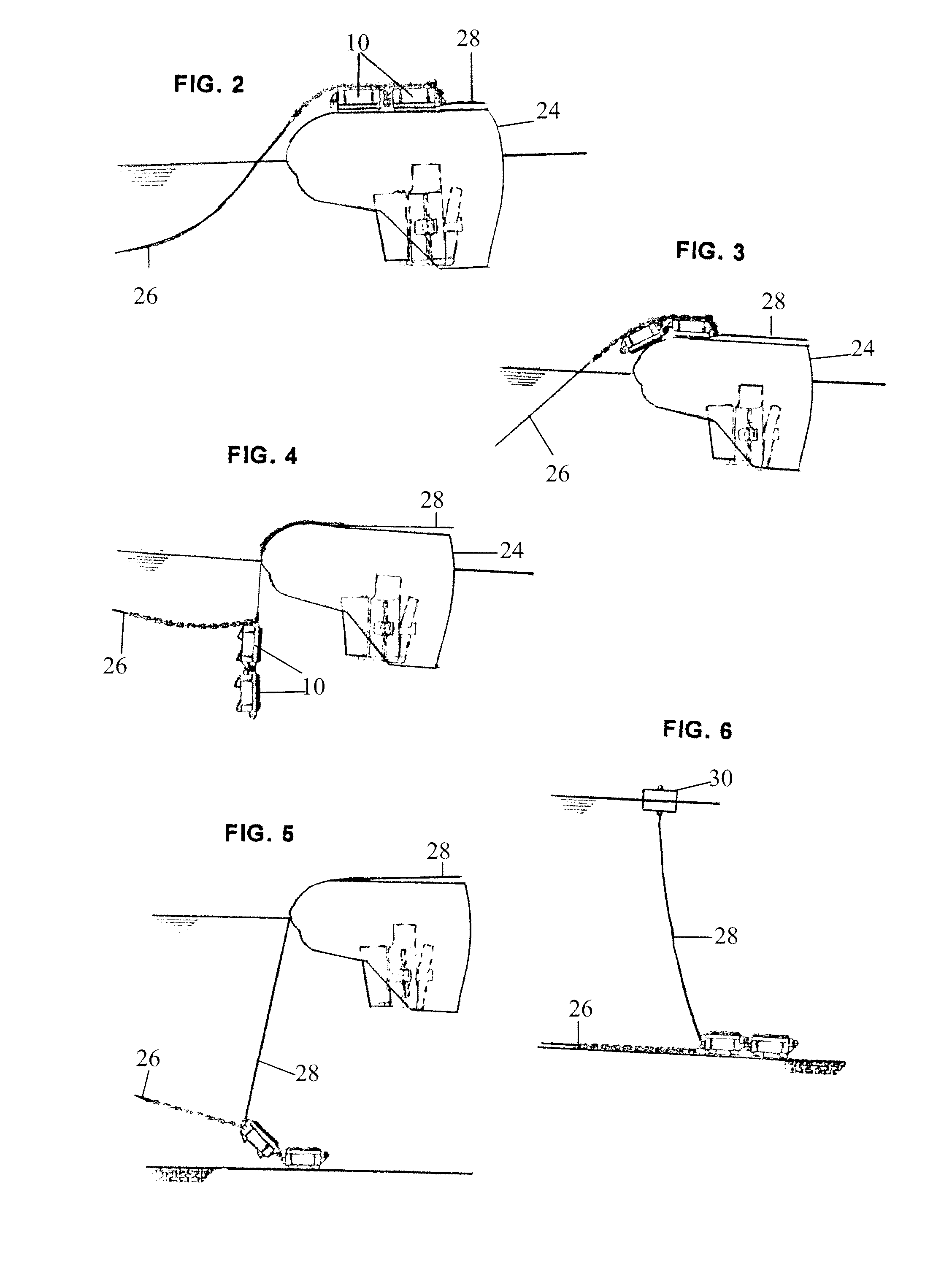Gravity anchor
a gravity anchor and anchor technology, applied in the field of anchors, can solve the problems of increasing the difficulty of handling it offshore, the need for aht's is compounded, and the crane capacity of tugs (aht's) may not be sufficient to handle these heavy gravity anchors, so as to improve the drag and hold power
- Summary
- Abstract
- Description
- Claims
- Application Information
AI Technical Summary
Benefits of technology
Problems solved by technology
Method used
Image
Examples
Embodiment Construction
[0016]A single anchor unit 10 of the gravity anchor is illustrated in FIG. 1. The single unit will be referred to as the anchor unit for ease of reference. It should be understood that one or more anchor units 10 may be used in combination to provide the necessary weight and holding power in accordance with the requirements of each specific situation.
[0017]As seen in FIGS. 1 and 8, an anchor unit 10 has a top, a bottom, and four sides and is generally comprised of dead weight 12, main padeye 14, hinge padeyes 16, spikes 20, and handling padeyes 22.
[0018]Dead weight 12—The majority of the anchor unit's weight is present in the deadweight 12. It may be made completely of steel, a steel enclosure filled with lead weight, or a steel enclosure filled with concrete. Depending on the vessel, water depth, soil conditions, etc., each anchor unit 10 is envisioned to weigh in the range of 10 to 30 metric tons.
[0019]The main padeye 14 serves as the attachment point for the mooring line from the...
PUM
 Login to View More
Login to View More Abstract
Description
Claims
Application Information
 Login to View More
Login to View More - R&D
- Intellectual Property
- Life Sciences
- Materials
- Tech Scout
- Unparalleled Data Quality
- Higher Quality Content
- 60% Fewer Hallucinations
Browse by: Latest US Patents, China's latest patents, Technical Efficacy Thesaurus, Application Domain, Technology Topic, Popular Technical Reports.
© 2025 PatSnap. All rights reserved.Legal|Privacy policy|Modern Slavery Act Transparency Statement|Sitemap|About US| Contact US: help@patsnap.com



